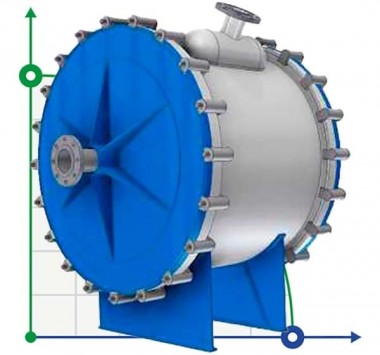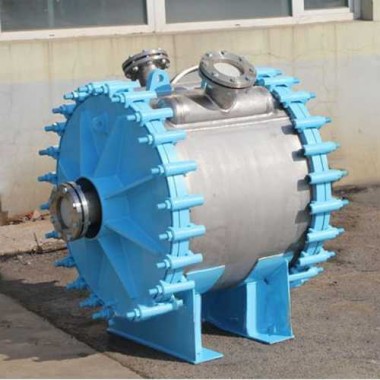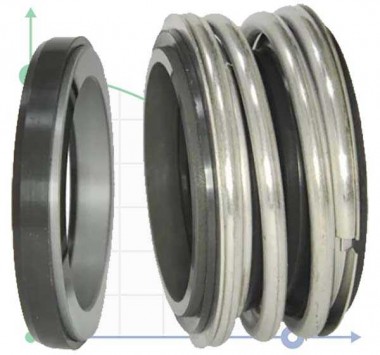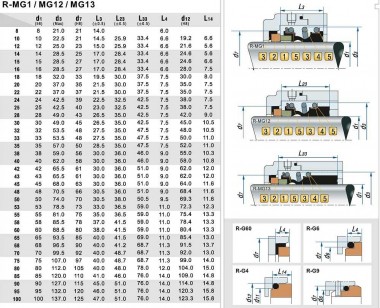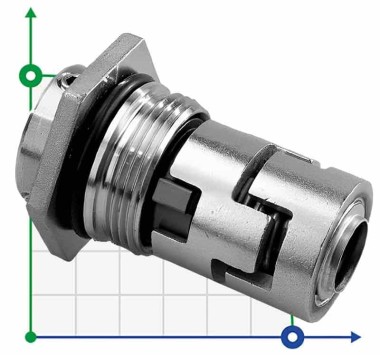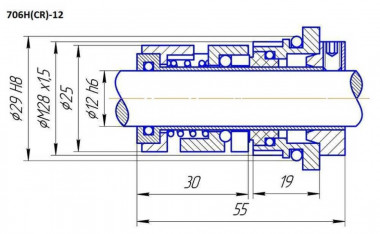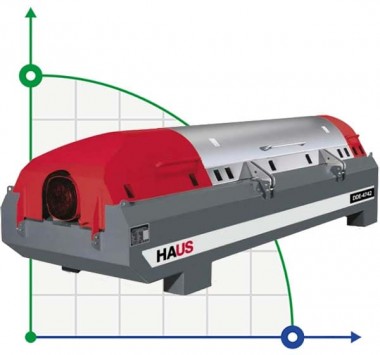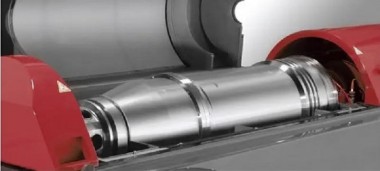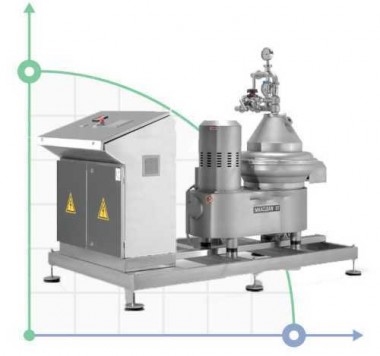Use of recuperative cycles for closed heating of the mash column
The principle of operation of the mash column boiler with forced circulation is to feed the stillage into the pipe space of the boiler using a specially installed pump and then to the bottom of the mash column. Live steam is fed into the annular space. The stillage heated in this way to a temperature higher than the temperature in the bottom part of the BK, getting into the bottom part, instantly boils and ensures the distillation process in the beer column. The amount of circulating vinasse (multiplicity) is determined in such a way as to ensure maximum heat transfer from live steam to vinasse, as well as minimizing deposits on the walls of the boiler pipes.
Figures 1 and 2 show the layout of the equipment when heated by a forced circulation boiler.
Fig. 1

Fig. 2

The most effective method is the variant of "heating" the brew (distillation) column (BK) with alcohol-water vapor of the rectification column (RK). The scheme works as follows: alcohol-water vapors from the RK are fed into the annular space of the recuperative boiler BK. The stillage from the bottom part of the BK by a circulation pump is first fed into the tube space of the recuperative boiler BK, which is at the same time an RK reflux condenser, and then into the tube part of the live steam boiler BK and then into the bottom part of the BK for heating the stillage to the required temperature and cooling (condensation) of alcohol water. vapors of RK.
A live steam boiler is installed for force majeure and commissioning modes of operation. Condensate of alcohol-water vapor (reflux) is directed to the upper plate of the RK.
Figure 3 shows the layout of the equipment when heating the BC with the RK alcohol-water vapor.
Fig. 3

The use of recuperation is also supported by the fact that this method of heating achieves energy savings and a decrease in consumption per unit of production.
Let us consider an example of the consumption of energy resources (live steam) by mash and rectification columns at a 3000 dal plant. (Fig. # 4)
Fig. 4

The total consumption of energy resources by the two columns is: heat energy in the form of live steam 46 kg /dal; cold in the form of recycled water 42 kW /dal.
Operation with the use of a recuperative circuit (using secondary heat) allows you to save heat energy in the form of live steam for heating the mash column and part of the energy for cooling the distillation column.
The total consumption of energy resources by two columns in the recuperative circuit is:
- heat energy in the form of live steam 26 kg / dal;
- cold in the form of recycled water 26 kW / dal.
That is, the savings only on the use of recuperation in a bundle of distillation column - beer column is:
- heat energy in the form of live steam 20 kg / dal;
- cold in the form of recycled water 16 kW / dal.







